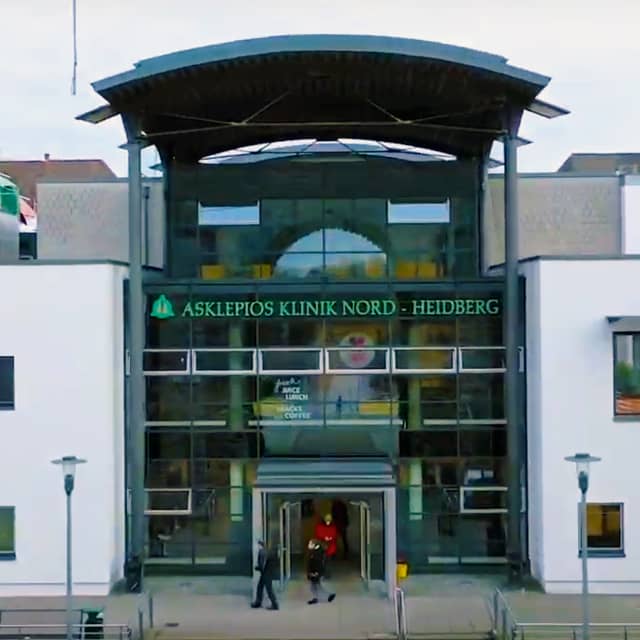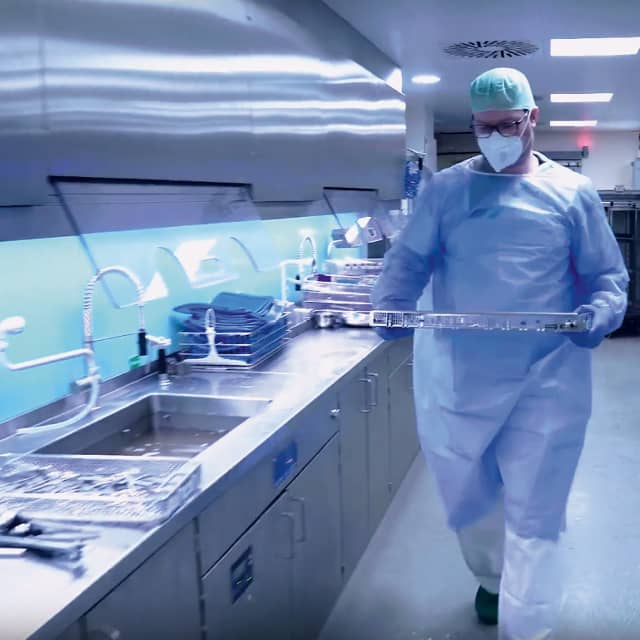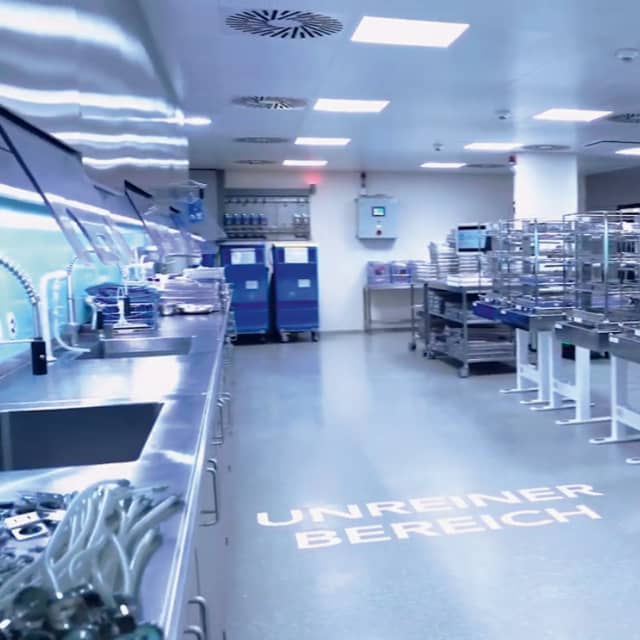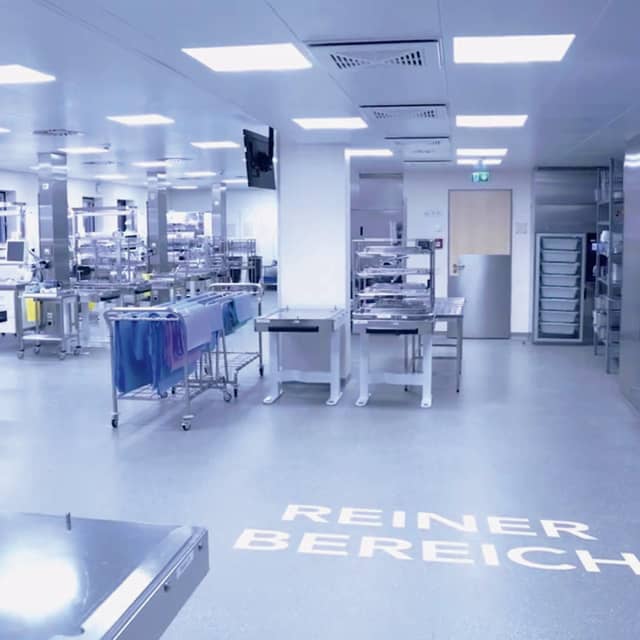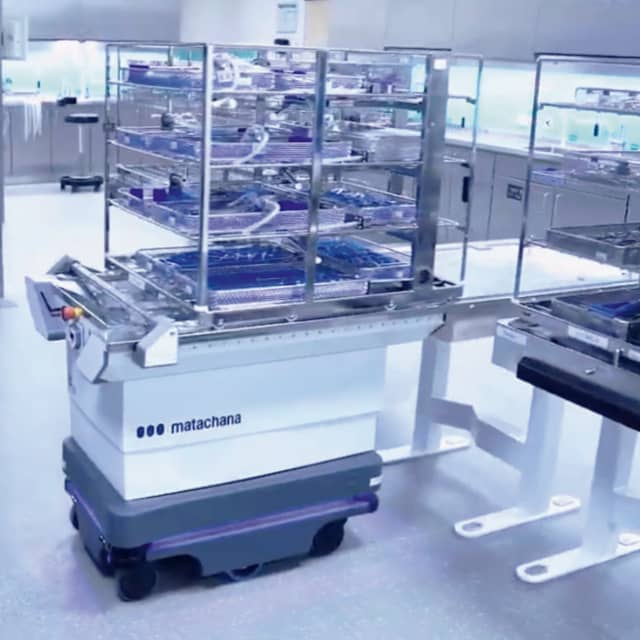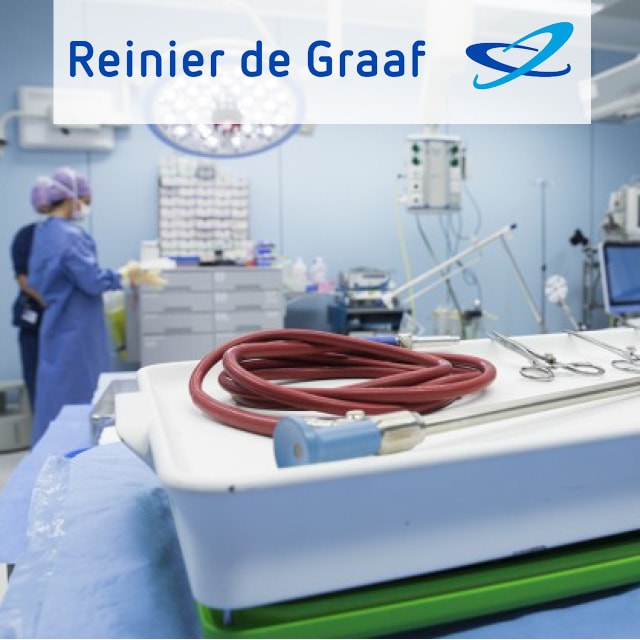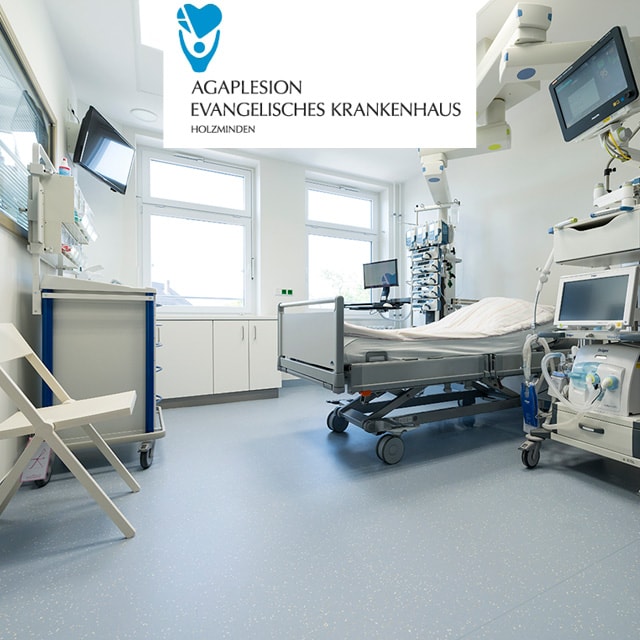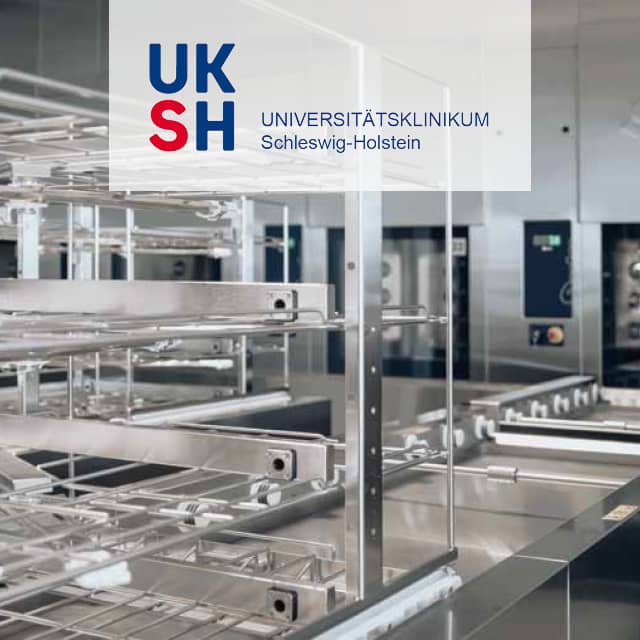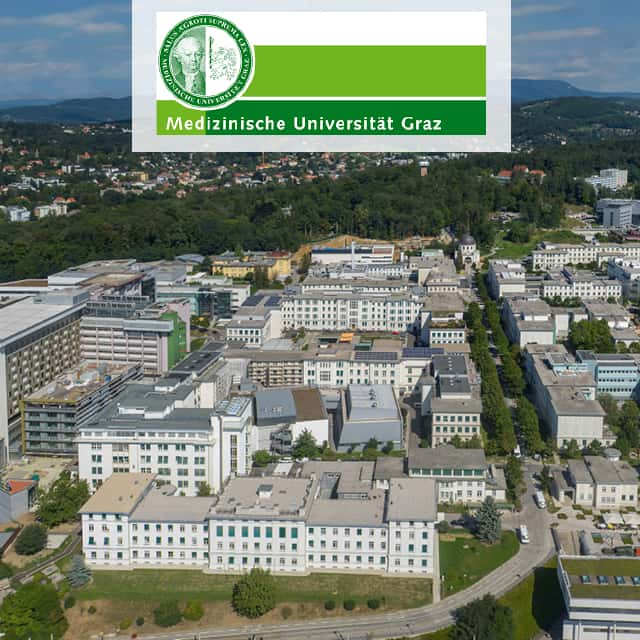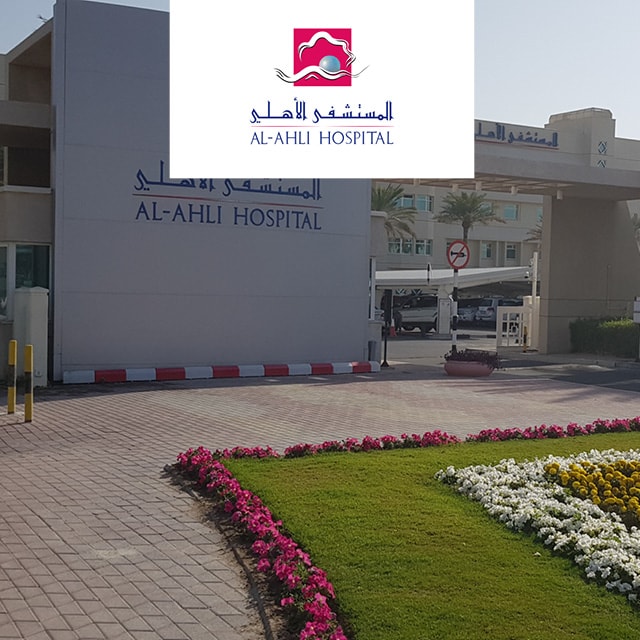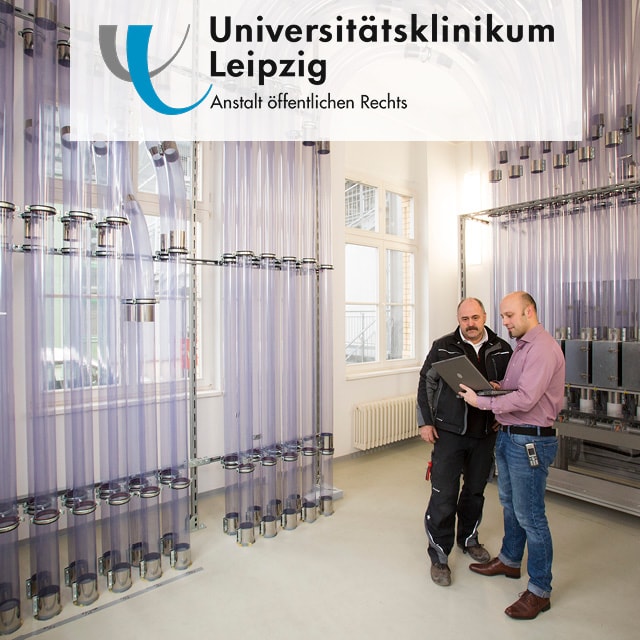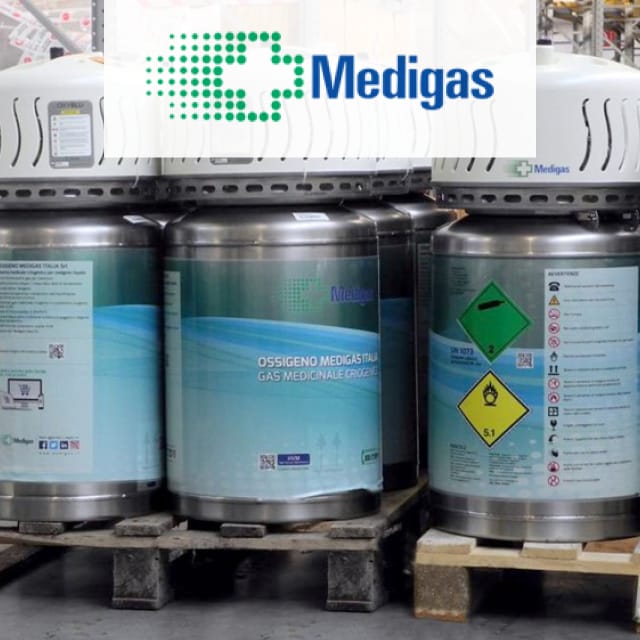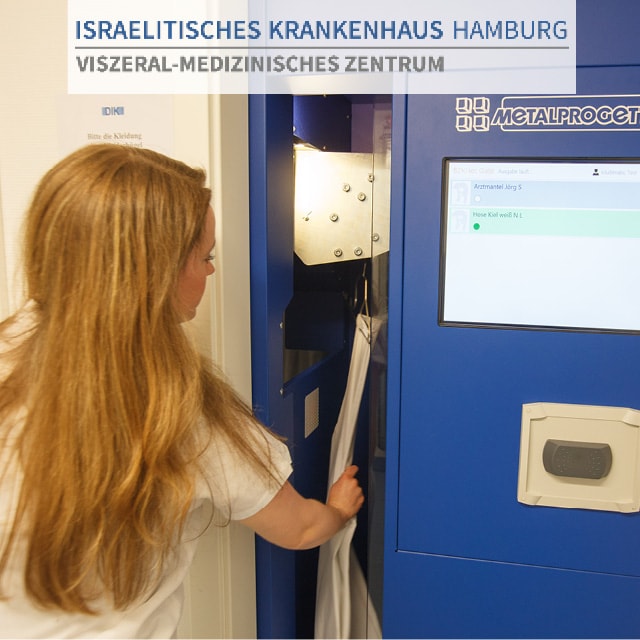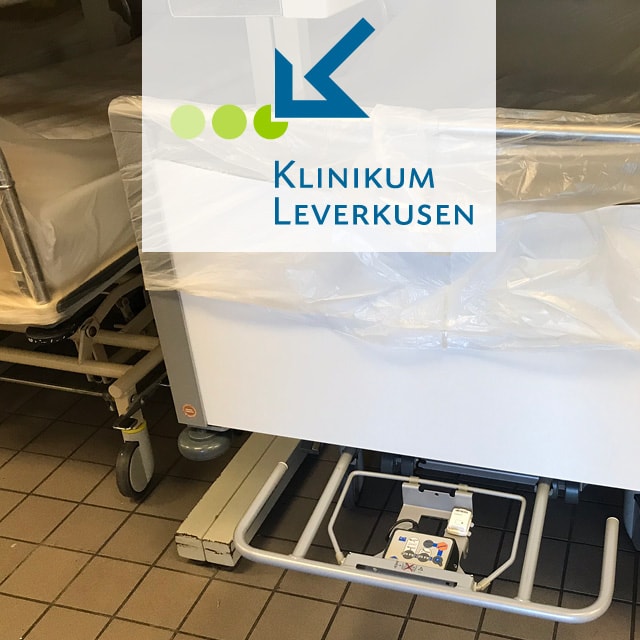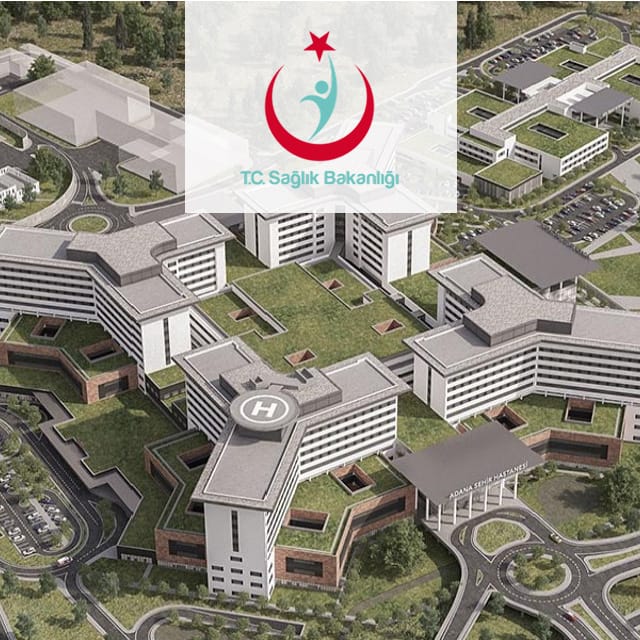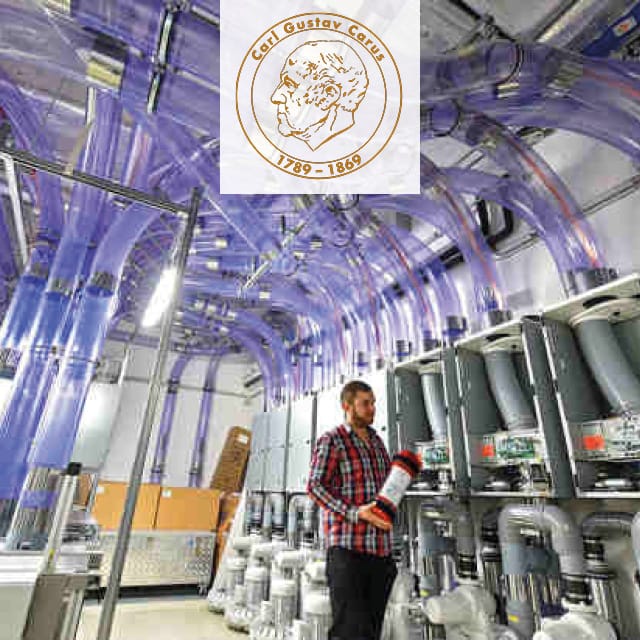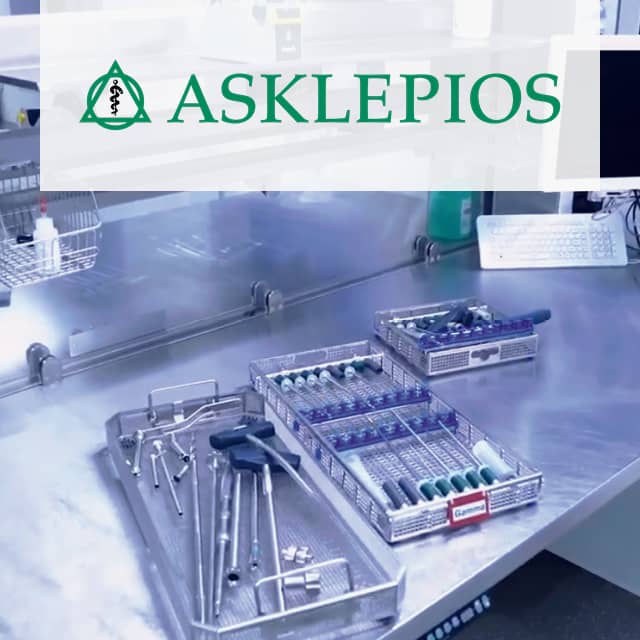
Automated Sterile Goods Supply with Robotics, Sensors and AI
The Asklepios Kliniken Group is a hospital operator primarily active in Germany with 160 medical facilities in 14 German states. The company's objective is to make clinic processes at all locations more efficient by means of digitization and the use of robotics, sensor technology and AI. One use case is the timely supply of sterile medical products to the operating room at Asklepios Klinikum Nord in Hamburg.
The supply of sterile goods must be ensured in all of the company's medical facilities. Sterilization of surgical goods takes place in a reprocessing unit for medical devices (AEMP). The aim is to digitally control the sterilization process, precisely track the sterile goods as they are transported through the clinic, and increase the availability of the required medical devices.
(Image Source: Asklepios)
Process Requirements
There are various sterilization systems in the AEMP, including washing and disinfection devices, steam sterilizers, and low-temperature sterilizers with formaldehyde and hydrogen peroxide. Correct assignment of the medical devices to the respective sterilization process is necessary to prevent damage to the sterile goods and to make them safely usable for operations.
After sterilization, the medical devices must not enter the unclean area of the AEMP. In the clean area of the AEMP, the sterilized medical devices are prepared for transport to the operating room. For this purpose, a set of required sterile goods is assembled in the tray – a metal transport container. Error-free detection of each medical device is required to indicate whether all required products are present. In doing so, the AI must be able to recognize the different products.
Objectives of Asklepios
- To increase the availability of sterile goods
- To digitize the supply of sterile goods
- To reduce the workload for employees in the AEMP
- To track transport of sterile supplies to the operating room
- To increase patient safety
The Asklepios Solution
At Asklepios Klinik Nord in Hamburg, an automated AEMP system with AI, robotics and sensor technology is used for sterile goods supply.
In the AEMP, clinic staff pre-clean the medical devices and place them on a standardized transport container, a metal tray. Clinic staff enter which tray is intended for which sterilization process on a tablet. The tray is picked up by a robot, which automatically transports it to the sterilization unit and places it there. The AI uses sensors to detect which medical devices are in the tray and RFID technology to determine which sterilization units are free.
After sterilization, the medical devices enter the clean area of the AEMP. This prevents medical devices that have already been sterilized from coming into contact with germs. By means of AI, each tray is checked for completeness. The AI is able to recognize entire loaded trays as well as individual surgical instruments and to differentiate between different medical devices. A rollout of sensor technology and AI is targeted beyond the AEMP for all operating rooms. This will make it possible to track the transport route of the clean sterile supplies to the operating room and the unclean sterile supplies back to the AEMP by having the AI repeatedly check the trays for completeness.
Due to the AI used, no manual control of the trays on the way to the operating room is necessary and it is ensured that the required sterile supplies are available for each operation. The workload for clinic staff is reduced. In addition, the automated transport of medical devices in the AEMP achieves further time savings, as manual loading and unloading of the sterilization equipment and the associated walking distances for clinic staff are eliminated.
Hardware & Software
- Matachana Group – AEMP-System
- Matachana Group – AL10 Robot
- DARVIS - AI
Advantages
- The availability of sterile goods is increased
- The sterile goods supply is digitized
- Workload is reduced for employees in the AEMP
- Transport of sterile goods to the operating room is tracked
- Patient safety is increased
Learn More
Questions? Get in contact with the editorial team!
Technologies
Application Fields


